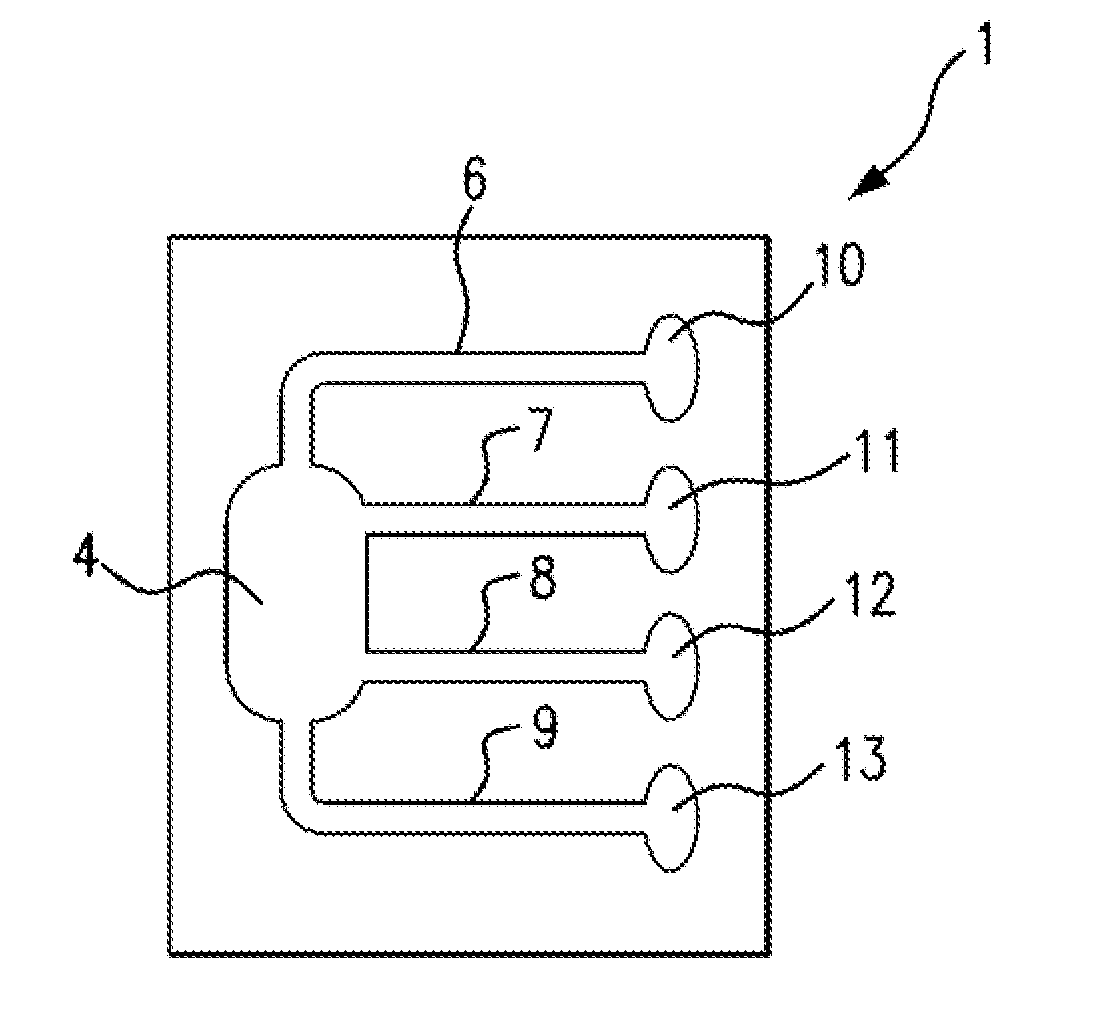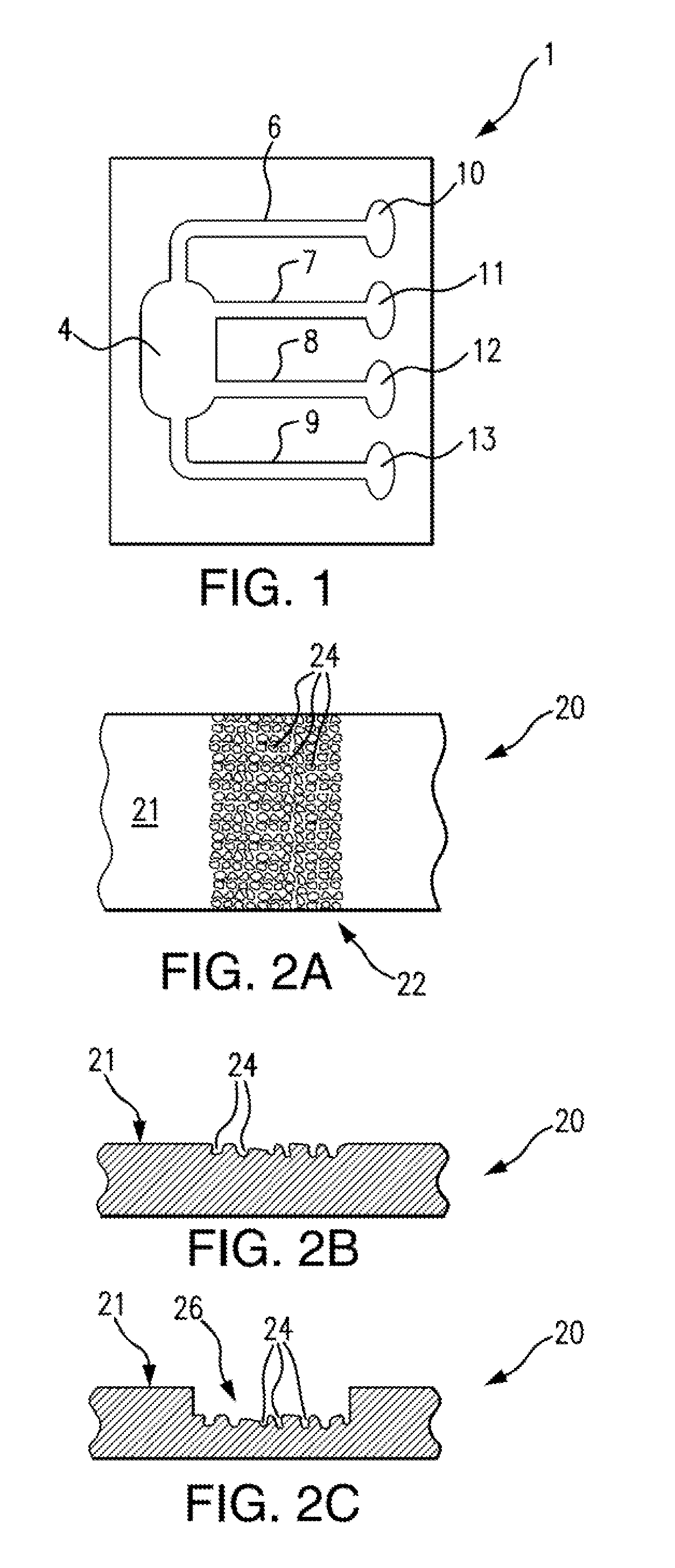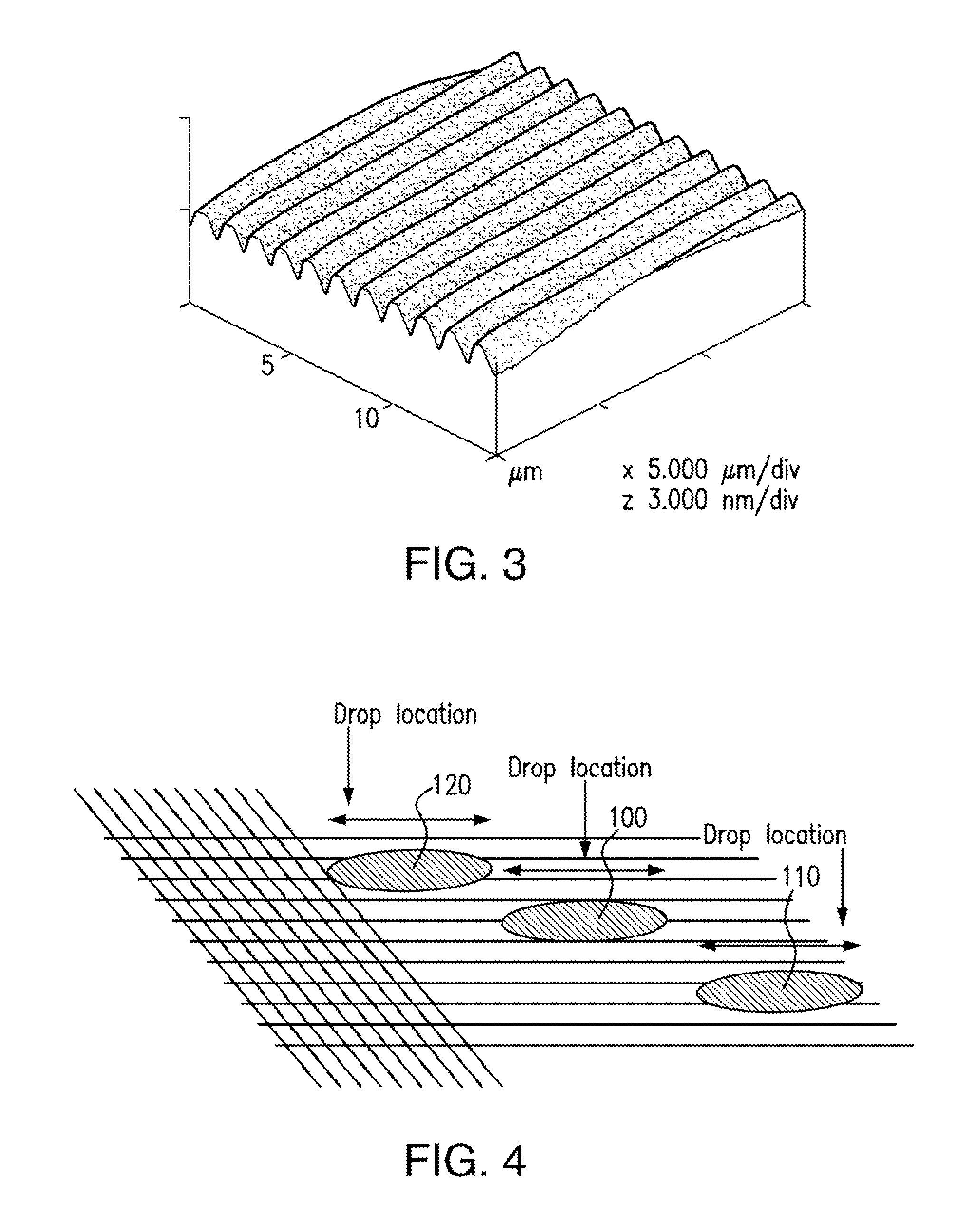Microfluidic surfaces and devices
a microfluidic surface and microfluidic technology, applied in the field of microfluidic surfaces and devices, can solve the problems of significant behavioral changes, unsuitable for large-scale commercial and industrial applications, and adversely affect the test or process being run
- Summary
- Abstract
- Description
- Claims
- Application Information
AI Technical Summary
Benefits of technology
Problems solved by technology
Method used
Image
Examples
example 1
Linear Flow on Nickel Shims
[0057]Sinusoidal wave patterns were produced in the surface of nickel shims using conventional imaging techniques. Specifically, a curable photoresist coating was applied to a glass substrate and subjected to laser imaging using a split laser beam which is manipulated to re-intersect at the coated substrate surface. The laser beams will alternately cancel out each other's energy or amplify each other's energy across the surface of the nickel substrate resulting, in “lines” in the photoresist corresponding to the greater or lesser exposure. The photoresist coated surface is then developed and washed to remove the undeveloped photoresist. The surface is then subjected to electro-plating with nickel to form shims having the negative of the original formed surface topography. A positive shim is likewise prepared by electro-plating of the negative shim. The lines manifest themselves are linear grooves or linear ridges, depending upon whether one, is using the p...
example 2
Linear Flow on Nickel Shims with Cross Grating
[0060]Nickel shims were prepared as in Example 1 except that a cross-grating was applied. The cross-grating was attained by use of a two-step photoresist curing process wherein the nickel substrate was first exposed as in Example 1 and then the beam to substrate surface angle changed and a the substrate exposed again. This resulted in sample plates that had areas of linear gratings and double gratings superimposed on each other. FIG. 4 presents a schematic of the nickel substrate with the cross-grating topography. Though the pattern is depicted as spaced lines, the actual topography is as shown in FIG. 3; thought the area corresponding to the cross grating would have the same appearance as intersecting waves. The specific samples evaluated and the results attained therewith are presented in Table 2.
[0061]In addition to the quantitative results presented in Table 2, a number of other observations were made and are reflected in the schemat...
example 3
Polymer Substrates
[0062]In order to demonstrate the applicability of the present invention to polymer films, especially with respect to the ability to transfer the surface topography, a number of polymer films were surface modified using the nickel shims from Example 1 as stamping tools. The transfer was effected by an embossing technique in which the heated nickel masters were heat pressed into the polymer film surface using a mechanical press. The heat of the press depended upon the softening point of the specific polymer films selected. Though not used here, the preferential method would be to use a hot rotary embossing process as this is a well known and effective process for embossing polymer films. The surfaces prepared and the results attained thereby are presented in Table 3. In Table 3, the polymer substrates are cyclic olefin copolymer (COC), polycarbonate (PC) and polyethylene terephthalate (PET). Other films being investigated include polyamide, ionomer resin (Surlyn™), ...
PUM
| Property | Measurement | Unit |
|---|---|---|
| diameter | aaaaa | aaaaa |
| diameter | aaaaa | aaaaa |
| height | aaaaa | aaaaa |
Abstract
Description
Claims
Application Information
 Login to View More
Login to View More - R&D
- Intellectual Property
- Life Sciences
- Materials
- Tech Scout
- Unparalleled Data Quality
- Higher Quality Content
- 60% Fewer Hallucinations
Browse by: Latest US Patents, China's latest patents, Technical Efficacy Thesaurus, Application Domain, Technology Topic, Popular Technical Reports.
© 2025 PatSnap. All rights reserved.Legal|Privacy policy|Modern Slavery Act Transparency Statement|Sitemap|About US| Contact US: help@patsnap.com



